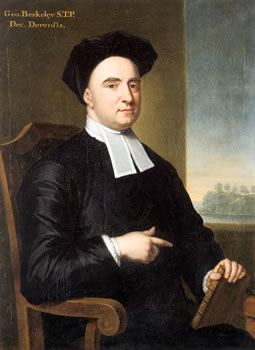
George Berkeley is a philosopher one doesn't hear much about these days, but as one of the authors of All That Has Gone Wrong with the world, apparently his ideas are still out there corrupting people's minds and souls.
A friend just wrote me a note saying that his dictum Esse est percipi or at least an interpretation of it, is still popular in modernist art schools.
Wiki says:
This theory, summed up in his dictum, "Esse est percipi" ("To be is to be perceived"), contends that individuals can only directly know sensations and ideas of objects, not abstractions such as "matter."
It's no wonder the kids can't get out of the hall of mirrors.
Berkeley's theorizing was empiricism at its most extreme. In his first publication, regarding vision, he stated that we only really perceive two spatial dimensions, height and width. The third spatial dimension of depth is not directly known; rather, it is inferred by the mind. As a young man, Berkeley theorized that individuals cannot know if an object is, individuals can only know if an object is perceived by a mind. He stated that individuals cannot think or talk about an object's being but rather think or talk about an object's being perceived by someone; individuals cannot know any "real" object or matter "behind" the object as they perceive it, which "causes" their perceptions. He thus concludes that all that individuals know about an object is their perception of it.
...and down down the spiral into solipsism...
This raises the question whether this perceived object is "objective" in the sense of being "the same" for fellow humans, in fact if even the concept of other human beings, beyond individual perception of them, is valid.
...easy to see why it is popular in modern nailing-chairs-to-walls art schools. Probably popular with serial killers too.



No comments:
Post a Comment